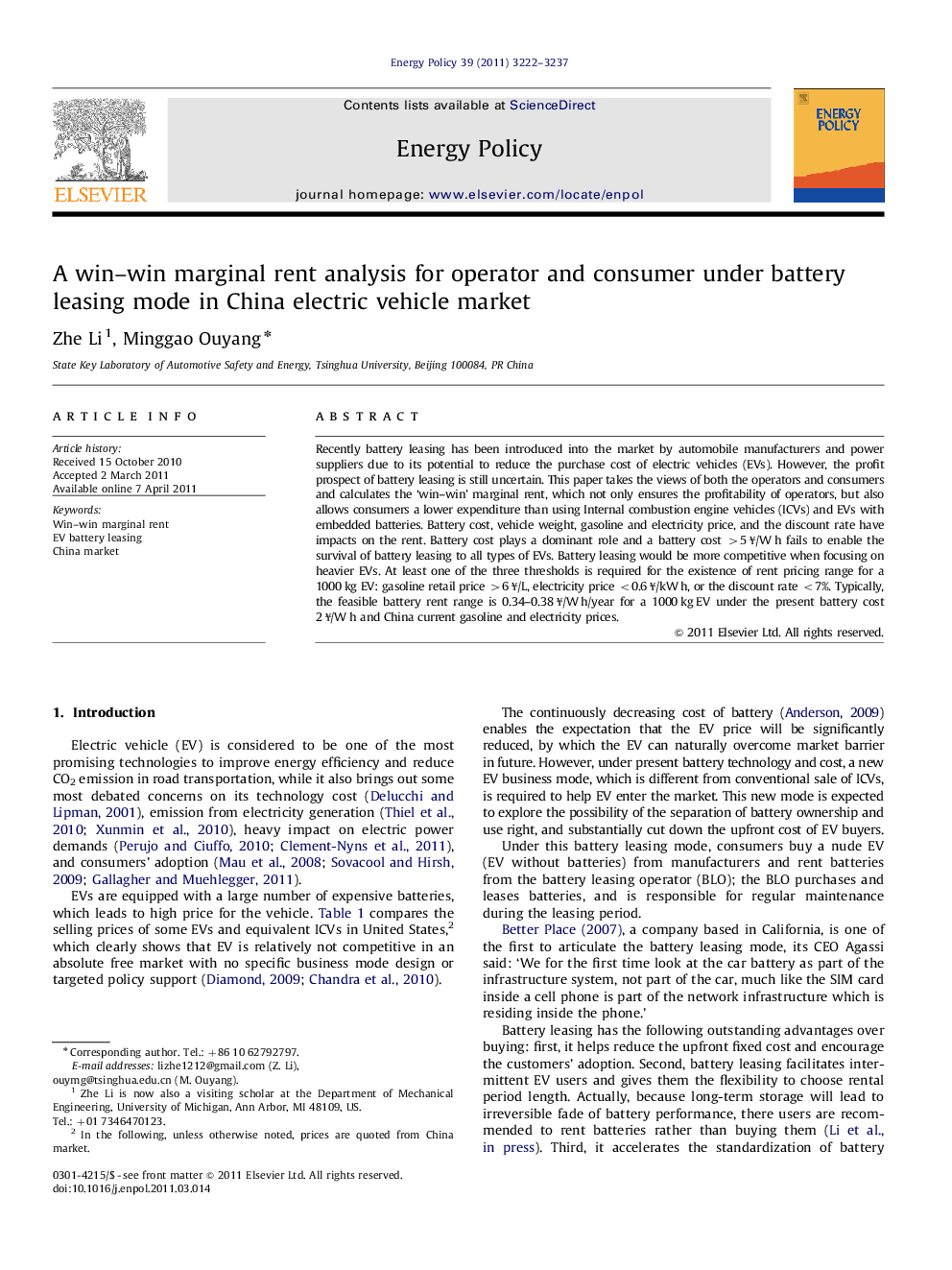| Article ID | Journal | Published Year | Pages | File Type |
|---|---|---|---|---|
| 994908 | Energy Policy | 2011 | 16 Pages |
Recently battery leasing has been introduced into the market by automobile manufacturers and power suppliers due to its potential to reduce the purchase cost of electric vehicles (EVs). However, the profit prospect of battery leasing is still uncertain. This paper takes the views of both the operators and consumers and calculates the ‘win–win’ marginal rent, which not only ensures the profitability of operators, but also allows consumers a lower expenditure than using Internal combustion engine vehicles (ICVs) and EVs with embedded batteries. Battery cost, vehicle weight, gasoline and electricity price, and the discount rate have impacts on the rent. Battery cost plays a dominant role and a battery cost >5 ¥/W h fails to enable the survival of battery leasing to all types of EVs. Battery leasing would be more competitive when focusing on heavier EVs. At least one of the three thresholds is required for the existence of rent pricing range for a 1000 kg EV: gasoline retail price >6 ¥/L, electricity price <0.6 ¥/kW h, or the discount rate <7%. Typically, the feasible battery rent range is 0.34–0.38 ¥/W h/year for a 1000 kg EV under the present battery cost 2 ¥/W h and China current gasoline and electricity prices.
► Rent pricing for EV battery leasing must obey win–win rule for BLO and consumers. ► Rent is affected by battery cost, vehicle weight, energy price and discount rate. ► Battery cost plays dominant role for the BLO survival as described in ‘5-3-2’ Law. ► Heavier EVs are more suitable for battery leasing when battery cost is high. ► The profitability of BLO is sensitive to the price of gasoline and electricity.
